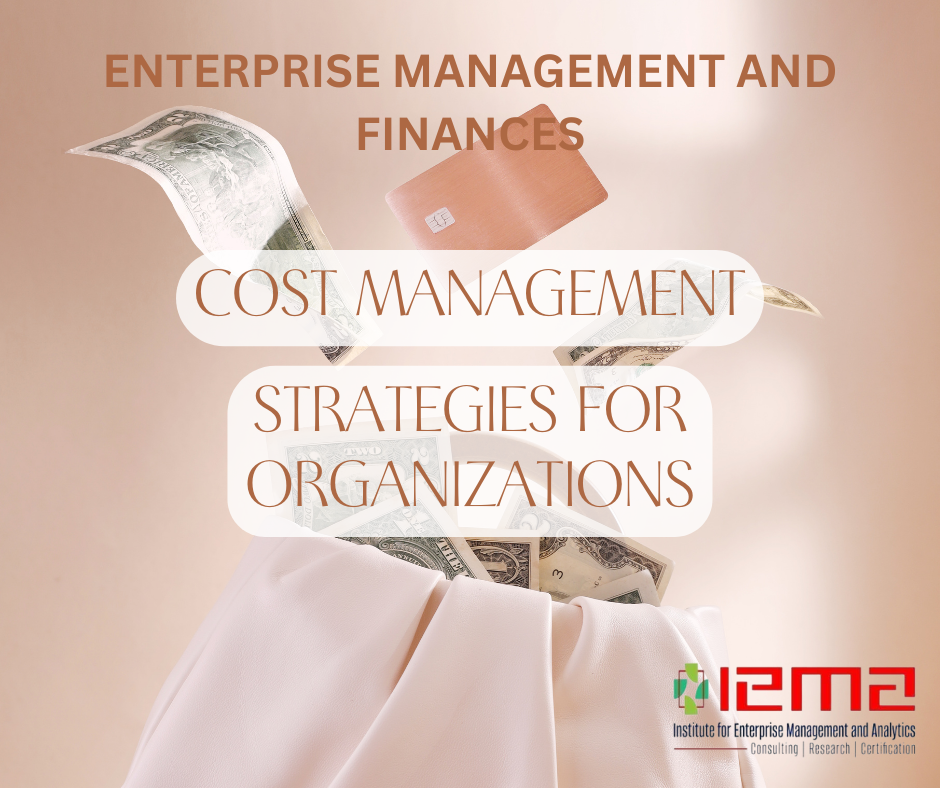In today’s competitive business landscape, large organizations face the challenge of controlling costs without sacrificing quality. Striking this balance is crucial for maintaining profitability and staying ahead of the competition. Here are some effective strategies to help your organization achieve this goal:
1. Implement Lean Management Practices
Lean Management focuses on reducing waste and enhancing productivity. Here’s how to get started:
- Streamline Processes: Regularly review workflows to eliminate inefficiencies and redundancies.
- Standardize Procedures: Ensure consistent and error-free operations by implementing standardized processes.
- Foster Continuous Improvement: Encourage employees to suggest improvements, fostering a culture of continuous enhancement.
2. Embrace Technology and Automation
Investing in technology can lead to substantial cost savings:
- Automate Repetitive Tasks: Increase efficiency and reduce labor costs by automating time-consuming tasks.
- Utilize AI and Machine Learning: Leverage AI for predictive analytics to optimize supply chain management, inventory control, and customer service.
- Adopt Cloud Computing: Shift to cloud-based solutions to reduce the costs associated with maintaining physical IT infrastructure.
3. Optimize Supply Chain Management
Effective supply chain management is key to reducing costs:
- Build Strong Vendor Relationships: Negotiate better prices and terms with suppliers.
- Implement Just-in-Time Inventory: Reduce holding costs and minimize waste with just-in-time inventory practices.
- Optimize Logistics: Use data analytics to streamline routing and cut transportation expenses.
4. Outsource Non-Core Activities
Outsourcing allows you to focus on core competencies while cutting costs:
- Business Process Outsourcing (BPO): Outsource functions like HR, payroll, and customer service to specialized firms.
- IT Outsourcing: Contract out IT services to lower the costs of in-house IT infrastructure and support.
5. Enhance Workforce Efficiency
A motivated and efficient workforce can lead to significant savings:
- Implement Performance Incentives: Motivate employees with performance-based incentives.
- Invest in Upskilling and Reskilling: Empower your employees with the skills they need to be highly efficient and adaptable. This can lead to improved productivity and a reduction in the need for external resources.
- Right-sizing: Analyze your workforce and identify areas where redundancies exist. Consider restructuring or redeployment opportunities before resorting to layoffs.
- Flexible Work Arrangements: Remote work and flexible schedules can lead to cost savings on office space and improve employee satisfaction, potentially reducing turnover costs.
6. Manage Energy and Resources Wisely
Cutting energy consumption can yield substantial savings:
- Adopt Energy-Efficient Practices: Invest in technologies and practices that save energy.
- Embrace Sustainability: Implement sustainable practices such as recycling and waste reduction to lower costs.
7. Practice Sound Financial Management
Effective financial management is crucial for controlling costs:
- Strict Budgeting: Monitor and control expenditures with rigorous budgeting processes.
- Real-Time Cost Tracking: Use software tools to track and analyze costs in real time.
- Regular Cost-Benefit Analysis: Ensure expenditures are justified with ongoing cost-benefit analyses.
8. Engage in Strategic Procurement
Strategic procurement practices can help reduce purchasing costs:
- Bulk Purchasing: Leverage discounts by buying in bulk.
- Long-term Contracts: Secure better rates through long-term supplier contracts.
- Conduct Supplier Audits: Regularly audit suppliers to ensure they meet quality and cost standards.
9. Enhance Quality Management
Maintaining quality while cutting costs is possible with strong quality management:
- Total Quality Management (TQM): Improve product quality and customer satisfaction with TQM practices.
- Six Sigma: Reduce defects and improve efficiency using Six Sigma methodologies.
- Regular Quality Audits: Identify and address issues promptly with frequent quality audits.
10. Foster Innovation
Innovation can lead to new ways of reducing costs:
- Encourage Idea Generation: Motivate employees to propose cost-saving ideas.
- Invest in R&D: Develop cost-effective products and processes through research and development.
- Collaborate: Share costs and innovations by collaborating with other organizations and research institutions.
By adopting these strategies, large organizations can effectively manage and reduce costs without compromising on quality. The key is to continuously evaluate and adapt these strategies to meet the evolving business environment and organizational needs.
Have you implemented any of these strategies in your organization? Share your experiences and tips in the comments below!





Leave a Reply